Opinion
Early Childhood Care & Education – Quality Standards as a tool to promote equitable quality
Dr Kamini Prakash Rege believes in the need for Quality Standards as a tool to promote equitable quality ensuring optimum developmental opportunities for children
Published
6 years agoon
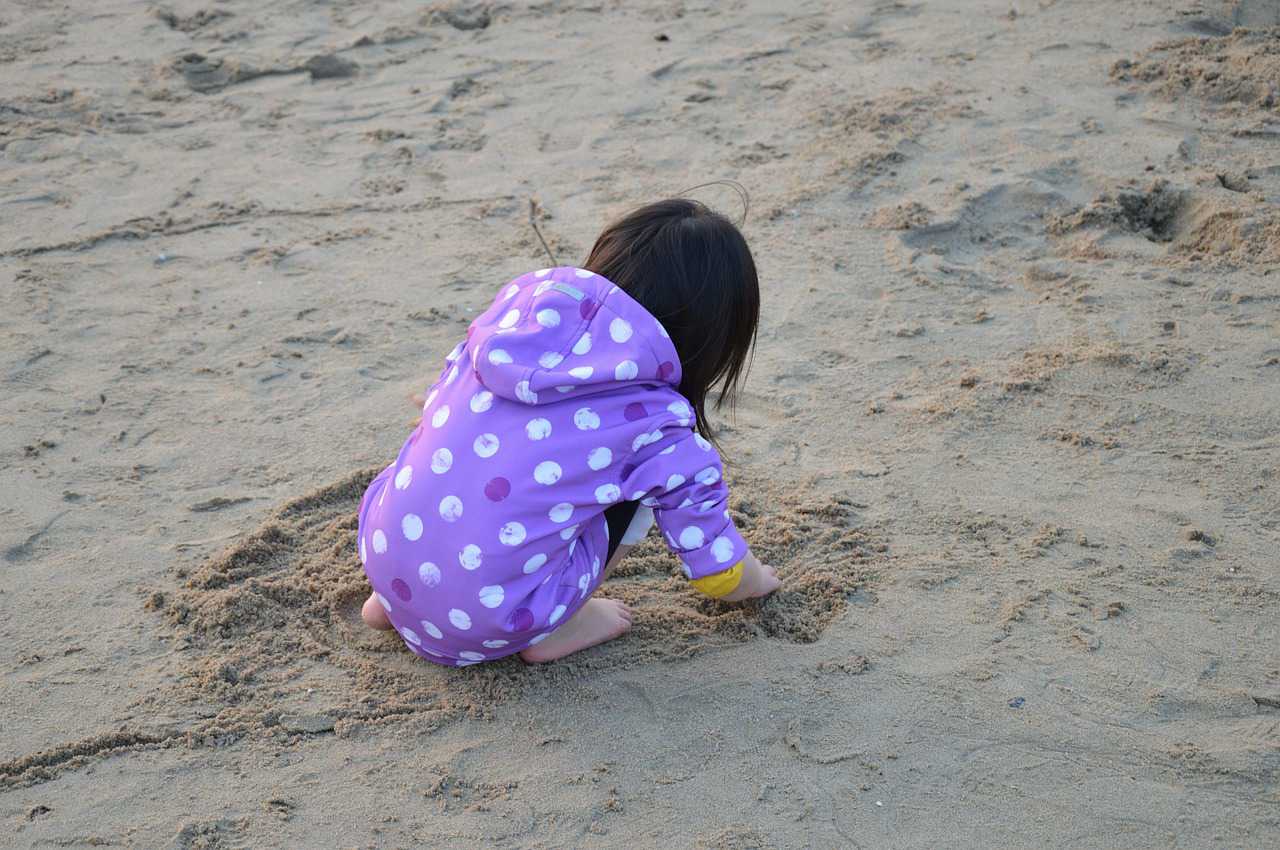
Acceptable Standards
At present, in India, as in many other countries, there is a great diversity in the nature of programmes available for ECCE. The number of players in the field is increasing; this multiplicity of service providers has led to diverse models of ECCE entering the field, bringing with them a multitude of philosophies of childhood and education, often without examining the cultural and contextual relevance of the models. However, there is no certain qualification for an individual to enter the field of ECCE, and there have hardly been any attempts made to lay down some guidelines to ensure that the ECCE services offered are of the right quality and serve the best interests of the young child. At times, many of these ECCE provisions are detrimental rather than being beneficial to the young child. Therefore, it follows as a logical corollary to set some acceptable standards for ECCE in order to ensure improved quality across all the programmes and provisions available to the young children across the country.
Professional Development
In India, the role and functioning of the nature of programmes available for ECCE are changing and so is what is expected of teachers. Teachers are asked to teach in increasingly multicultural classrooms; to place greater emphasis on integrating students with special learning needs in their classrooms; to make more effective use of information and communication technologies for teaching; to engage more in planning within evaluative and accountability frameworks, and to do more to involve parents in schools.
No matter how good pre-service training for teachers is, it cannot be expected to prepare teachers for all the challenges they will face throughout their careers. Education systems, therefore, seek to provide teachers with opportunities for in-service professional development in order to maintain a high standard of teaching and to retain a high-quality teacher workforce.
Effective professional development is on-going, includes training, practice, and feedback, and provides adequate time and follow-up support. Successful programmes involve teachers in learning activities that are similar to ones they will use with their students and encourage the development of teachers’ learning communities. There is growing interest in developing schools as learning organisations, and in ways, for teachers to share their expertise and experience more systematically.
The development of teachers beyond their initial training can serve a number of objectives including:
- to update individuals’ knowledge skills, attitudes and approaches towards the new teaching techniques and objectives, new circumstances and new educational research and recent advances in the area;
- to enable individuals to apply changes made to curricula or other aspects of teaching practice;
- to enable schools to develop and apply new strategies concerning the curriculum and other aspects of teaching practice;
- to exchange information and expertise among teachers and others, e.g. academics, industrialists; and
- to help weaker teachers become more effective.
Ensuring Quality
The approach of Quality Standards is informed by the principle that quality is a multifaceted concept and its enhancement should be seen as a dynamic and a continuous process and not an end in itself, wherein organisations move towards optimum by adopting a cumulative approach towards quality improvement. This would lead to continuous improvement in the services offered by centres in a manner that meets the needs of the young child. It is a tool to promote equitable quality. A graded approach is being adopted wherein the essential criteria will be laid down in a graded and weighted form.
The purpose of the Quality Framework is to provide directives for areas known to be important for ensuring the optimum developmental opportunities for children. It also involves developing appropriate support mechanisms to ensure that quality is achieved and maintained.
Standards and norms are crucial:
- To promote professionalism in the field
- To promote, reinforce and safeguard quality services for all young children
- For the systematic development of this field
Services and programmes for the children in the age group of 0 – 8 years have to be developed keeping in mind the developmental abilities i.e. developmental domains, milestones and needs of the child.
Pedagogies used in ECCE programmes should emphasize the holistic development of the young child, also keeping in mind the needs of special children. Both care and education are important, and the linkages between them need to be explored and drawn on. Interlinkages across domains should also be addressed as the domains of development are not exclusive to each other.
The pedagogy should reflect the learning of the child in his/her context. Transactions should be based on an understanding of the context of the child and the social background of the family.
It is important to recognize the family as the first context where learning and development for all children take place. The family and parents are of paramount importance in the delivery of ECCE programmes and services. A harmonious relationship with positive linkages to the family and parents ensures that the best interests of the child are kept in mind for optimum development.
The child is an active agent in learning, and this has to be encouraged and facilitated in order to allow him/her to develop his/her full potential. The child should be free to make choices, explore and experiment, for which the child should be provided with such opportunities in the surroundings. The voices of the children, along with the voice of the special children, need to be listened to, in order to ensure that their interests are being met by the practitioners, researchers, teachers, professionals and various stakeholders.
Quality ECCE programmes should value and respect diversity of all kinds – cultural, linguistic, caste, gender, class, disability etc. Quality programmes should promote a sense of belonging among children from the varied Indian cultural heritage whether from high socio-economic strata or from low economic strata, abled group or disabled group. Programmes should embrace diversity by introducing a variety of rich and varied experiences, thus allowing children to value and respect diversity.
Protecting Children
We teach our young children all sorts of ways to keep themselves safe. We teach them to watch the hot stove, we teach them to look both ways before they cross the street, but more often than not – body safety is not taught until much older – until sometimes…it is too late. Talk to your children. It is never too soon. It doesn’t have to be a scary conversation. Don’t wait another day. Start these conversations today. Here are the 10 most important areas to cover:
- Talk about body parts early: Name body parts and talk about them early – very early. Use proper names for body parts – or at least teach your child what the actual words are for their body parts. I can’t tell you how many young children I have worked with who have called their vagina their “bottom” and other various names. If a child needs to make a disclosure of abuse – this can make their story confusing.
- Teach them that body parts are private: Tell your child that their private parts are called private because their private parts are not for everyone to see. Explain that mommy and daddy can see them naked, but people outside of the home should only see them with their clothes on. Explain how their doctor can see them without their clothes because mommy and daddy are there with them and the doctor is checking their body.
- Teach your child body boundaries: Tell your child matter-of-factly that no one should touch their private parts and that no one should ask them to touch somebody else’s private parts. Parents will often forget the second part of this sentence. Sexual abuse often begins with the perpetrator asking the child to touch them or someone else.
- Tell your child that body secrets are not okay: Most perpetrators will tell the child to keep the abuse a secret. This can be done in a friendly way such as, “I love playing with you, but if you tell anyone else what we played they won’t let me come over again” or as a threat – “This is our secret. If you tell anyone I will tell them it was your idea and you will get in big trouble!” Tell your child that no matter what anyone tells them, body secrets are not okay. Let your child know that they should always tell you if someone makes them keep a body secret.
- Tell your child that no one should take pictures of their private parts: This one is often missed by parents. There is a whole sick world out there of pedophiles who love to take and trade pictures of naked children online. This is an epidemic and it puts your child at risk. If you only talk about body safety you might be missing a risk factor. Tell your child that no one should ever take pictures of their private parts.
- Teach your child how to get out of scary or uncomfortable situations: Some children are uncomfortable with telling people “No” – especially older peers or adults. Help give them excuses to get out of uncomfortable situations. Tell your child that if someone wants to see or touch private parts they can tell them that they need to leave to go potty.
- Have a code word your child can use when they feel unsafe or want to be picked up: As children get a little bit older, you can give them a code word that they can use when they are feeling unsafe. This can be used at home, when there are guests in the house or when they are on a playdate or a sleepover.
- Tell your child they will never be in trouble if they tell you a body secret: Children often tell me that they didn’t say anything because they thought they would get in trouble too. This is often reiterated by the perpetrator. Tell your child that no matter what happens – when they tell you anything about body safety or body secrets they will NEVER get in trouble.
- Tell your child that a body touch might tickle or feel good: Many parents and books talk about “good touch – bad touch” – but usually, these touches do not hurt or feel bad. Try and stay away from these phrases, as it can confuse a child that is “tickled” in their private parts. I prefer the term “secret touch” – as it is a more accurate depiction of what might happen.
- Tell your child that even if they know someone or even if it is another child – these rules are the same: This is an important point to discuss with your child. When you ask a young child what a “bad guy” looks like they will most likely describe a cartoonish villain. Be sure to mention to your child that no one can touch their private parts. You can say something like, “No one should touch your private parts. Mommy and daddy might touch you when we are cleaning you or if you need cream – but no one else should touch you there. Not friends, not aunts or uncles, not teachers or coaches – no one. Even if you like them or think they are in charge, they should still not touch your private parts.”
ECE Awareness
Overall, the attitude of the parents in India about the importance of Early Childhood is found to be moderately favourable towards schooling and education of their children. The fact is that there is growing awareness regarding literacy and education; persistent campaigns through mass media around the country and attempts at mainstreaming have significantly affected all sections of the society, including the tribal population. The value attached to schooling and education of children has substantially improved compared to earlier times when lack of literacy and negative attitude towards education were the main barriers to sending children to preschool. Previously education was considered as wastage of time and money since its outcome was perceived to be uncertain and unimportant. Presently, the importance and the outcomes of education are highly appreciated by people through persistent efforts at compulsory education and increased awareness through information and technology revolution. The favourable attitude of the parents refutes the earlier findings that parental attitude and involvement is generally negative or low in minority and low socioeconomic status characteristics of households, in particular, parental income, wealth, education and occupation, have long been known to be major determinants of educational enrolment and achievement in both developing and developed countries. The family stimulation is the resultant of the influence of cultural and educational profile of the family and active parental attitudes regarding education and attainment of their children.
Family involvement is the strongest predictor of child educational outcomes. This dimension associated significantly with children's motivation to learn, attention, task persistence, receptive vocabulary skills, and low conduct problems. Family involvement in education has been identified as a beneficial factor in young children's learning. It is, therefore, a key component of national educational policies and early childhood programs. Much of the research on parent involvement, as it relates to children's outcomes, has emphasized the relationship between specific parent involvement behaviours and children's achievement. Parental involvement at school (e.g., with school activities, direct communication with teachers and administrators) is associated with greater achievement in mathematics and reading. Higher levels of parent involvement in their children's educational experiences at home (e.g., supervision and monitoring, daily conversations about school) have been associated with children's higher achievement scores in reading and writing, as well as higher report card grades. Parental beliefs and expectations about their children's learning are strongly related to children's beliefs about their own competencies, as well as their achievement. Parents who evidenced high levels of school contact (volunteering in the classroom, participating in educational workshops, attending meetings) had children who demonstrated greater social competency than children of parents with lower levels of school contact. Home-based involvement would be most strongly associated with positive classroom learning outcomes and that direct school-based involvement would predict lower levels of conduct problems. Home Based Involvement activities, such as reading to a child at home, providing a place for educational activities, and asking a child about school, evidenced the strongest relationships to later preschool classroom competencies. These activities were related to children's approaches to learning, especially motivation and attention/persistence, and were found to relate positively to receptive vocabulary. The attitude of the parents signifies that the supporting nature of family in their children’s education. The parental attitude can be negative or positive. The negative attitude of the parents regarding education and schooling can prevent their children from getting an education. With less parental support in school work, low level of motivation and poor self-esteem of children can result Positive attitude of the parents can be beneficial to their children in many cases and can be reflected in the improvement in class performance, creating interest among children to learn, and higher achievement scores in reading and writing. The growing awareness regarding education makes many families value their children’s education and act favourably towards early years and education of their children. They become a part of the decision-making process of school and decide their children’s future regarding higher education.
Concerns & Challenges
Commercialization of the education: Urbanization and industrialization have not even left the educational sector untouched. One can witness this boom with mushrooming of child-related centers in every nook and corner of the country. Big brands and companies have now entered the market with the motive of making profits. These companies through their marketing strategies provoke people to take up these ventures but at times these people are not themselves well equipped/ qualified. Commercialization is becoming a major concern which if not handled properly could lead to serious consequences. The professionals should be responsible while planning and developing for young children’s education programmes. They should be responsive towards child’s diverse needs since it is not possible to develop a quality program without understanding the basic needs of a child.
Quality of preschool education: For decades we have known that something is amiss in early care and education. Years ago, it was observed that the field was facing a “trilemma”- a nearby inescapable tension among programme quality, staff compensation and affordability of care. Today’s reality is that even with increased communities to ECE from without the government, quality remains embarrassingly poor. Staff salaries are inadequate and high-quality care is not affordable for most parents. While inadequate resources are absolutely the first and major problem, they are not the only issue. How the resources are spent is also critical. In spite of maybe important efforts to improve quality, funds have been inadequate and strategies insufficiently comprehensive to make a real difference in the quality of care most children receive. It is as though we keep planting seeds in the same flower bed year after year without fertilizing the soil, and then wonder why the flowers do not thrive.
Multi-culturality: Considering our own country India, the land of multiculturalism and diversity with so many languages, different attires, cuisines and various codes of conducts. A country that has distinct cultures right from Kashmir to Kanyakumari sometimes creates challenges for the preschool teacher. They have to deal with a number of culturally and linguistically diverse children in a single classroom, thus providing them appropriate education and care and also have to work effectively with their families. Despite numerous efforts in schools, administration, and teacher training still the majority of classroom teacher believe that they are not able to meet all the needs of the children and families from diverse backgrounds. Hence measures are required in this field to train the teachers working with such group of students. They should be sensitive enough to bring best out of a child despite of his/her limitations.
Decreasing Age Range of the child in preschool: Previously, the family system in India was the joint family system, the mothers used to be with the child for most of the time, but the times have changed now, the families are not only becoming nuclear but even the mothers are stepping into the jobs. This leaves them with less time to be spent with their children. Today, the parents have found an easy solution to escape from this liability by getting their child enrolled in a preschool at a very young age even when their child’s separation anxiety has not got settled. For their own professional gains, they are neglecting their roles as parents. Thus, the age range instead of going upwards it is going downward.
Teacher’s qualification: It is recommended that all groups of young children (age 3 and older) should have a teacher with Bachelor’s Degree including Early Childhood Specialization. It should be seen that Early Childhood teachers have training and professional competence. Teachers with comparable qualifications and experience should receive the same salary and benefits, whether teaching in a public elementary school or in early childhood education. Staff should have a range of formal qualifications, with a portion of centre teachers and family child care teachers holding bachelor’s degree and administrators holding advanced degrees. Entry level positions should be maintained so that pre-service qualifications do not become a barrier to individuals from low socio-economic strata or minority groups seeking to enter the field.
Wages do matter: In today’s time when everybody is after money, the wages in this sector are not satisfactory enough to motivate professionals to enter this field. Early care and education staff should earn wages linked to those earned by public elementary school teachers, with salaries varying depending on locale. The starting hourly pay for a child care teacher with a Bachelor’s degree should be equal to that of an elementary school teacher with the same levels of training, professionalisation, and work responsibilities. This is one of the primary reason that male professionals are not keen to enter in this field as in our society they are considered to be the main bread earner and with such low wages, it will be difficult for them to meet the required parameters of their family sustainability.
Parent Involvement is essential: Parent involvement with child’s education has become a major issue in this era of increasing concern about the quality of education. Parent involvement includes several different forms of parental participation in child’s life, education as well as his/her daily tasks. Parent involvement during early childhood period helps the child to form and shape his or her own academic self-concept. Pre-school and pre-school teachers play a vital role in involving the parents with the child’s curriculum thus; they should be well trained to do so. But it is often found that lack of planning and lack of mutual understanding between teachers and parents results in ineffective parent involvement.
About the author:

Dr. Kamini Prakash Rege is Assistant Professor, Department of Human Development, College of Home Science Nirmala Niketan, Affiliated To University Of Mumbai – India. She is also Treasurer, Early Childhood Association – India. Email: [email protected]
You may like
-


Questioning the Trend of Lavish Farewells- #FarewellFiasco
-
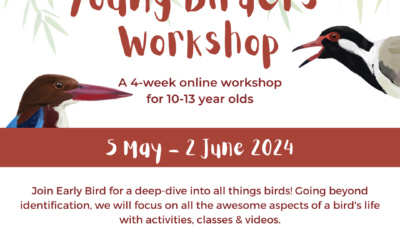

Young Birders’ Workshop Opens Registration for Children Aged 10-13 Years
-
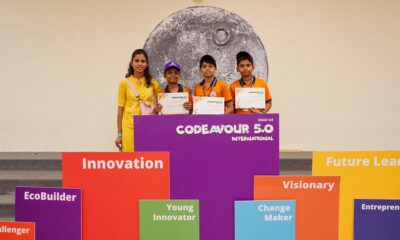

STEMpedia Successfully Completed Codeavour 5.0- India’s National Innovation Fest
-


Reviving School Education: Countering the Coaching Centre Dominance
-


CBSE to Initiate Pilot for National Credit System in Grades 6, 9, and 11
-


The Role of Marketing in Education: Navigating the New Educational Landscape
-


From Overwhelmed to Empowered: Strengthening Educator Skills for Success
-
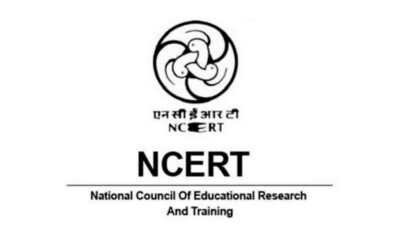

NCERT Introduces Bridge Month Programme for Class 6 Amid Textbook Transition
-


Indian Embassy Advocates for India-US Collaboration in Education Sector
-


Nurturing Healthy Behaviors: The Role of Schools in Shaping Health-Conscious Citizens
Education
Questioning the Trend of Lavish Farewells- #FarewellFiasco
Published
22 hours agoon
April 18, 2024
Imagine your child is attending their Year 12 farewell. It is a night they have been looking forward to, marking the end of their school journey and the start of something new. The atmosphere is charged with excitement, laughter, and the bittersweet feeling of saying goodbye. As the evening wraps up, the buzz does not fade; it shifts to the streets. A group of friends, adrenaline still running high from the night’s celebrations, decide to extend the farewell with a car rally. Among them is Aarav, driving his family’s SUV, a vehicle too powerful for his inexperienced hands.
The city sleeps as the convoy of cars snakes its way through the deserted streets, the hum of engines breaking the night’s silence. Aarav, feeling the thrill of the chase, pushes the pedal down, the speedometer needle climbing higher and higher. His friends, in the car beside him, cheer him on, the competition heating up as they approach the ring road. It is a wide stretch, seemingly perfect for their race, away from the prying eyes of the night.
But in a heartbeat, the night turns tragic. Aarav loses control. The SUV, now a projectile, careers off the road, skidding and tumbling for what seems like an eternity. The aftermath is a scene of devastation. The vehicle, unrecognisable, lies in ruins, and silence once again claims the night, now heavy with the weight of consequences.
By the time the first light of dawn touches the sky, the police are at the scene, piecing together the events. The accident leaves one young soul lost to the night and another battling for life in hospital. Questions swirl around the circumstances that led to this moment. Was it the rush of speed, a momentary lapse in judgement, or something more? The community is left reeling, grappling with the reality of a celebration turned catastrophe.
As the investigation unfolds, the police sift through CCTV footage, trying to trace the sequence of events and the other vehicles involved. Speculations arise that the tragedy was the result of a high-speed race gone wrong. Amidst this, a family mourns the loss of their child, a farewell that was meant to be a celebration now a memory marred by loss and regret.
This story, though actual, has been anonymized to protect the identity and privacy of the student involved. It highlights a critical issue prevalent in communities worldwide: the trend of extravagant farewells escalating into dangerous activities, posing threats not only to the students but also to society as a whole.
As we reflect on this story, it compels us to ask: Is the pursuit of a grand goodbye worth the price of a life? How do we balance the celebration of milestones with the responsibility we owe to our children’s safety and to each other? This tale, inspired by true events, leaves us pondering the traditions we uphold and the lessons we impart to the young minds we are nurturing for the future.
To read more on such trends that need to be called out and #un-trended, head to the April issue of our magazine here.
Education
Reviving School Education: Countering the Coaching Centre Dominance
Published
1 week agoon
April 11, 2024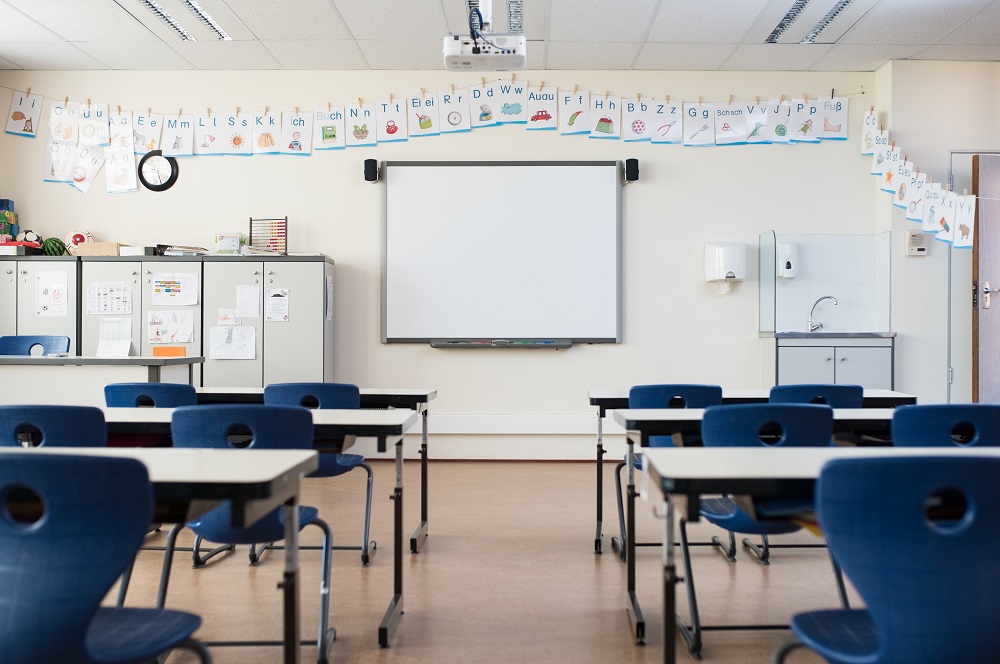
In recent years, a troubling trend has emerged within the educational landscape: the rise of “Dummy Admissions,” where students formally enrolled in schools are effectively abandoning the classroom in favour of coaching institutes. This phenomenon, particularly prevalent from the 11th standard onwards, sees students dropping out of school to prepare for competitive exams under the tutelage of coaching centres, which were originally intended to supplement, not supplant, school education.
The shift has been stark. Coaching, once a support system, has transformed into a parallel education industry, with some arguing it overshadows the broader developmental benefits of traditional schooling. This evolution poses a critical question: How can schools reclaim their role not just as preparatory grounds for board exams but as sanctuaries of holistic education that truly prepare students for life?
The Diminishing Role of Schools
The primary role of any educational institution is to foster an environment conducive to learning, curiosity, and personal growth. Schools are meant to be arenas where young minds receive a balanced education — academically, socially, and emotionally. However, the allure of scoring top marks in competitive exams has tilted the focus sharply towards rote learning and intensive exam preparation, often at the expense of holistic development.
The Coaching Conundrum
Coaching centres operate with a laser focus on results, primarily targeting competitive exams like the JEE, NEET, and others. This narrow approach prioritises immediate academic results over long-term learning and personal development. Students, driven by the pressure to excel in these high-stakes environments, often find themselves estranged from the broader educational experiences that school offers — experiences that are crucial in shaping well-rounded individuals capable of adapting to life’s varied challenges.
Reclaiming the Sanctuary of Education
For schools to regain their central place in the educational journey of students, they must evolve to meet the diverse needs of their students. Here are a few strategies that could help schools reassert their relevance:
- Integrated Curriculum: Schools could integrate aspects of competitive exam preparation into their regular curriculum, thus reducing the need for external coaching. This would allow students to prepare for exams without missing out on the broader educational offerings of the school.
- Focus on Skill Development: Beyond academic prowess, schools should enhance their focus on developing critical life skills such as critical thinking, problem-solving, creativity, and communication. These skills are crucial for success in professional and personal life and can make schooling more relevant.
- Counselling and Support Services: Enhanced counselling services can help students navigate their educational pathways and career choices effectively. Schools should equip students with the tools to make informed decisions about their futures.
- Experiential Learning: Schools must emphasise experiential and contextual learning, making education a more engaging, practical, and enjoyable experience. This can be achieved through project-based learning, internships, and real-world problem-solving scenarios.
- Parental Engagement: Engaging parents in the educational process and informing them about the importance of a balanced education can help shift the focus from mere exam preparation to overall development.
- Promotion of Arts and Sports: Encouraging participation in arts, sports, and other co-curricular activities can enrich students’ educational experience and support the development of a wide range of skills.
As the educational landscape continues to evolve, the challenge for schools is not just to prepare students for exams but to prepare them for life. In a world increasingly dominated by coaching centres, schools must innovate and broaden their educational offerings to ensure they remain valued not just as conduits to board results but as launchpads for the futures of students. It’s about striking a balance between academic rigor and holistic development, ensuring that schools remain the nurturing grounds for the leaders of tomorrow.
To read more on such trends that need to be called out and #un-trended, head to the April issue of our magazine here.
Education
Rebalancing the Scales: The Urgent Call for Humanities in STEM-Dominated Curricula
Published
2 weeks agoon
April 4, 2024
In today’s educational landscape, the scales are heavily tipped towards Science, Technology, Engineering, and Mathematics (STEM) fields, a trend that has sparked a crucial dialogue on the role of humanities in shaping well-rounded individuals. This discussion is not just academic; it reflects a deeper question about the kind of future we envision for our society and the individuals who will lead it.
Extra focus on STEM subjects is a broader issue: the sidelining of humanities in educational institutions, which reduces the vast expanse of human knowledge and creativity to mere footnotes. Students struggling to find value and meaning in a curriculum that doesn’t cater to their passion for history, literature, and the arts underscores a significant gap in our education system.
Recent studies highlight this imbalance. According to the National Foundation for Educational Research, students exposed to a balanced curriculum that includes humanities alongside STEM subjects exhibit a higher level of critical thinking, empathy, and adaptability. These skills are crucial not just for personal development but for navigating the complexities of today’s global society. Furthermore, a report by the American Academy of Arts and Sciences on the state of the humanities in higher education points out that students who engage in humanities courses are better prepared for leadership roles, showcasing the intrinsic value of these disciplines in cultivating informed and compassionate leaders.
Despite these findings, the preference for STEM subjects remains dominant, driven by the perception of better job prospects and economic benefits. This preference has led to a significant reduction in the availability and quality of humanities education in many schools. The scarcity of staff for humanities subjects and the absence of facilities like language labs not only hinder students from pursuing their interests but also limit the educational community’s ability to foster a diverse set of competencies among its students.
The consequences of this imbalance are far-reaching. By prioritising STEM at the expense of humanities, we risk nurturing a generation equipped with technical skills but lacking in the critical thinking, empathy, and cultural awareness that are equally vital in addressing the challenges of our increasingly interconnected world. This dichotomy raises a pressing question: are we merely training the next generation of technicians and engineers, or are we committed to nurturing well-rounded individuals who can contribute meaningfully to society?
The journey towards a more balanced educational approach begins with acknowledging the value of all disciplines. For students, and indeed for our future society, the richness of education lies not in the depth of knowledge in a single field, but in the breadth of understanding across the spectrum of human experience. As we stand at this crossroads, the choice is ours: will we continue down the path of narrow specialisation, or will we embrace the holistic education that our future leaders deserve?
Education
Palette of Possibilities: Nurturing Creativity in Schools through Modern Art
Published
2 weeks agoon
April 4, 2024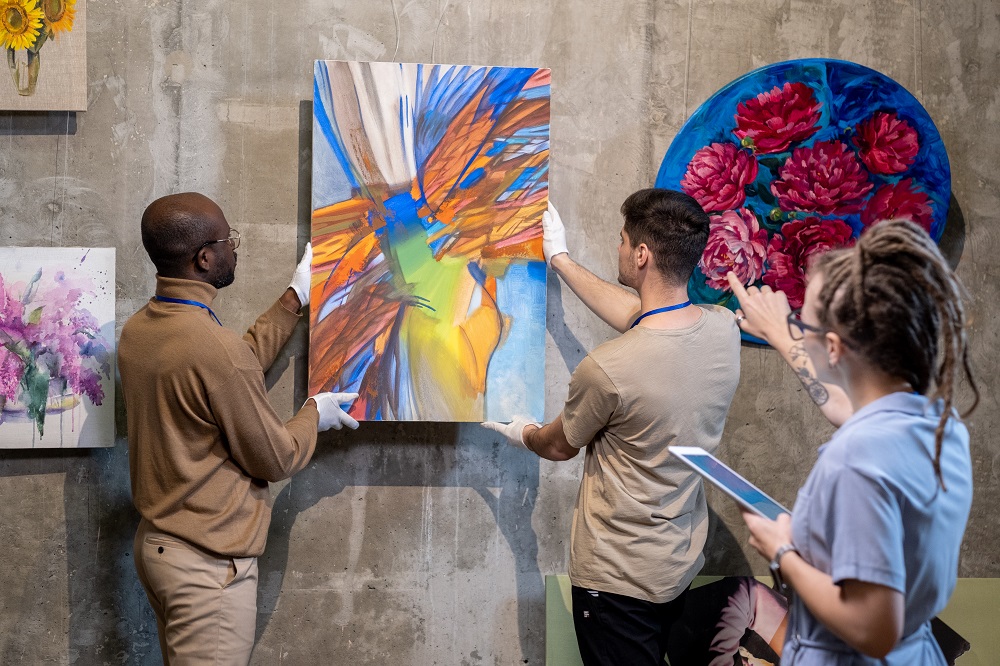
In the sphere of education in India, modern art often seems to be overlooked, relegated to the periphery of the academic spectrum. As a student who has traversed the diverse landscapes of Indian education, from traditional classrooms to the unique environment of boarding schools and experiential learning hubs, I find myself yearning for a more comprehensive exposure to the world of artistic expression, particularly modern art. The need for schools to step up, take responsibility, and actively involve students in art events is paramount, as it not only opens doors to diverse career possibilities but also cultivates a rich tapestry of creativity that can shape the coming generations.
As children, artistic expression often comes naturally. Young minds are unburdened by self-doubt or the constraints of societal expectations. Pablo Picasso quoted, “Every child is an artist. The problem is how to remain an artist once we grow up,” encapsulates a poignant reflection on the innate creative capacity inherent in every individual. Modern art is not just about canvases and paint; it is a dynamic force that ignites imagination, critical thinking, and a deeper understanding of the world. Yet, in the rigid framework of Indian education, the appreciation for modern art is often confined to the sidelines, overshadowed by the emphasis on conventional subjects like science and economics. But here’s the societal humor in this drama – we’re living in an era where a meme can garner more attention than a paragraph from a history book. The world craves creativity, and schools need to acknowledge that modern art is not just a rebellious teenager’s way of expressing angst; it’s the language of innovation and adaptability.
One of the primary reasons why schools need to prioritize modern art is its unparalleled ability to nurture creativity. In a world that is rapidly evolving, fostering creative thinking is essential. Modern art challenges students to think beyond the conventional, encouraging them to question, experiment, and envision new possibilities. By integrating modern art into the curriculum, schools provide a platform for students to express themselves in ways that transcend the boundaries of traditional subjects.
Expressive classes, extending beyond the conventional painting and sketching, open up avenues for students to convey their feelings using colors, drawings, and various artistic mediums. These sessions serve as a sanctuary where students can explore the depths of their emotions and thoughts, transcending the limitations of verbal communication. By tapping into the world of abstract expressionism, students are given the freedom to communicate through art, allowing for a richer and more nuanced understanding of their inner selves.
Art events play a pivotal role in this process. Unfortunately, such opportunities are often sparse in the Indian education landscape. Cultural wit lies in the fact that many students are oblivious to the plethora of careers awaiting them in the creative industries. Schools need to take the initiative to expose students to art exhibitions, workshops, and interactive sessions that showcase the diversity of modern artistic expressions. These events not only broaden students’ perspectives but also serve as catalysts for potential careers in the arts.
The inclusivity of modern art is another facet that makes it indispensable in schools. Unlike some traditional subjects that may seem exclusive or difficult for certain students to access, modern art is a platform where everyone can find a voice. It accommodates diverse perspectives, allowing students of varying abilities, backgrounds, and interests to engage meaningfully with the subject matter.
In the context of a globalized world, where cultural understanding and appreciation are crucial, modern art serves as a bridge between different societies and histories. It exposes students to a rich tapestry of global artistic expressions, helping them develop a sense of cultural empathy and an appreciation for diversity. By studying modern art, students gain insight into the shared human experience that transcends geographical and cultural boundaries.
To fully harness the potential of modern art in schools, it is essential for educational institutions to take proactive steps. This includes providing adequate resources for art programs, organizing art events, and encouraging collaborations with local artists and art communities. By fostering an environment where modern art is valued and celebrated, schools can empower students to explore their creativity and recognize the broader significance of artistic expression.
In addition to fostering a conducive learning environment, organizing art events within the school can prove instrumental. These events may showcase the brilliance of local art forms, such as Rajasthani art like Phad, Thapa and Sanjhi, Thangka from Arunachal Pradesh and Madhubani from Bihar. By incorporating these regional nuances into the school’s art curriculum, students gain exposure to diverse styles and cultural influences, enriching their understanding of the broader art landscape.



(Images- Phad, Thangka, and Madhubani art from India)
Moreover, numerous case studies show that exposure to art can sensitize individuals to social issues. One compelling example is the impact of community-based art projects in urban slums. The Dharavi Art Room, a non-profit organization, has initiated various art projects in the Dharavi slum in Mumbai. Through murals and community workshops, the project aims to empower residents, especially children, providing them with a creative outlet and a platform to express their stories. This case study may explore the impact of art on community dynamics, individual empowerment, and awareness of social issues within the slum. Through mural paintings and collaborative art initiatives, these projects have not only beautified the surroundings but have also brought attention to critical issues, fostering a sense of community and social responsibility.
The integration of modern art into the Indian education system is not just a matter of aesthetics but a strategic investment in nurturing well-rounded individuals. It’s time for schools across the country to recognize the transformative power of modern art and actively work towards exposing students to its myriad facets. By doing so, we not only open doors to diverse career opportunities but also cultivate a generation of individuals who approach life with creativity, curiosity, and a profound appreciation for the beauty that art brings to the world.
Authored by-
Parinya Santlani,
Student,
Paradise School, Goa
Education
Lessons Beyond a Cricket Pitch: An IPL-Inspired School Curriculum
Published
3 weeks agoon
March 27, 2024
“As we tune into the electrifying atmosphere of the Indian Premier League, where the clash of willow against leather sends pulses racing, we’re not just spectators of a thrilling spectacle. We’re witnesses to a living, breathing classroom where science dances with agility, leadership commands the play, and economics paints the bigger picture. Today, let’s embark on a journey beyond the boundary ropes, exploring how the IPL isn’t merely a cricket tournament but a dynamic, fun-filled educational odyssey.”
The Science Behind the Ball and Bat
At the heart of cricket lies a ballet of physics, each ball bowled a lesson in motion, energy, and force. The journey of a cricket ball, from the bowler’s hand to the bat, is a vivid demonstration of aerodynamics in action. Factors like air resistance, spin, and the Magnus effect collaborate to dictate the ball’s trajectory. A spinner’s delivery, curving through the air, isn’t just a challenge for the batsman but a practical example of physics. The materials of the game, especially the cricket bat made from willow, offer insights into material science, chosen for their capacity to absorb the shock of the ball’s impact and minimize damage to the hands.
The biomechanics of players, whether it’s a batsman executing a perfect cover drive or a bowler’s seam position at the point of delivery, are a testament to the human body’s potential when understood and harnessed through the principles of physics. Integrating these aspects into the curriculum can transform a standard physics lesson into a riveting session that connects students’ passion for cricket with the wonders of science.
Leadership on and off the Pitch
The IPL is a crucible of leadership, each match a case study in strategy, decision-making, and human management. Players like Virat Kohli and Rohit Sharma, with their tactical acumen and ability to inspire their teams, embody the essence of effective leadership. “Sports has taught me a lot. It helps reveal character. Sport teaches you about facing challenges, overcoming challenges on a regular basis which apply to every work of life.” Kohli once remarked, encapsulating the spirit of sportsmanship that transcends the cricket field. This philosophy can seamlessly be integrated into educational discussions, illustrating how leadership isn’t confined to high-pressure matches but is equally relevant in group projects, student councils, and beyond. MS Dhoni, a legendary cricketer and former Indian cricket team captain also believes that it is important to push every youngster to take up sports. “Be it, mentally or physically, sport teaches a lot to the students and that actually helps in practical life. Sports should play a big role in students’ life and everyone should be pushed to it,”
The Economy of Runs and Rupees
The IPL, a dazzling spectacle of cricket, is also a multi-billion-dollar industry that serves as a fascinating model for financial literacy and understanding the global economy of sports. The auction room, where players are bid on like prized artworks, offers a live demonstration of market dynamics and valuation. Sponsorships, media rights, and merchandising around the IPL introduce students to concepts of branding, revenue generation, and the economic impact of sports on national and global scales. It’s a practical lesson in economics, illustrating how supply and demand, investment, and financial management play out in one of the world’s most popular sports leagues.
IPL: A Classroom Without Walls
The IPL’s fusion of high-stakes cricket with lessons in physics, leadership, and economics presents an unparalleled opportunity to make learning interactive and engaging. It encourages students to see the relevance of their studies in real-world scenarios, thus igniting a passion for subjects that might previously have seemed abstract or disconnected from their interests.
Incorporating IPL-themed lessons into the curriculum can transform the traditional classroom, making learning a lively, participatory experience. As students analyse match strategies, calculate batting averages, or explore the economic model of the IPL, they’re not just learning; they’re engaging with the material in a way that’s both meaningful and enjoyable.
Cricket commentator and former cricketer Ian Bishop‘s words resonate deeply here: “The heart and soul of the game is what makes it so special.” In the context of education, the IPL embodies this spirit, proving that when you blend passion with learning, the classroom becomes a place of endless possibilities and discoveries.
The Indian Premier League offers more than just entertainment. It provides a vibrant, multifaceted platform for learning, encompassing physics, leadership, and economics, among other subjects. By viewing the IPL through an educational lens, we can inspire students to engage deeply with their studies, showing them that education, like cricket, can be filled with excitement, challenges, and lifelong lessons.
Knowledge
Empowering the next generation: How mentorship shapes the future of young women’s professions
Published
1 month agoon
March 8, 2024
Mentorship acts as a cornerstone in empowering women across diverse professional landscapes. Studies reveal a strong correlation between mentorship and positive career outcomes for women. Using studies and real-world examples, this article talks about how mentoring shapes women’s career prospects.
Bridging the Gender Gap: The Power of Role Models
According to a 2021 study by McKinsey & Company and Lean In, women who have mentors are more likely to advance in their careers than those who don’t. This emphasizes how important role models are. Through mentorship, mentees are encouraged to believe that “if they can do it, so can I” by seeing successful women in their area. They are thus motivated to go after big dreams and defy society norms that might have initially deterred them.
Breaking Down Barriers: Access to Networks and Resources
Mentorship transcends mere guidance; it unlocks valuable networks and resources. Mentors, often established professionals, can connect their mentees to crucial individuals and opportunities. A 2023 study by the Harvard Business Review found that women with mentors are more likely to be connected to senior leaders and receive critical career advice. These connections open doors to job opportunities, training programs, and industry knowledge, propelling women forward in their careers.
Building Confidence and Skill Development
Mentorship fosters professional development by providing constructive feedback and valuable insights. A research published in the Journal of Career Development also found that mentorship programs significantly increase women’s self-efficacy and confidence in their abilities. Through personalized guidance, mentors equip their mentees with the skills needed to excel in their chosen field. This tailored approach empowers women to navigate challenges, develop critical thinking skills, and become well-rounded professionals.
Real-World Examples: Paving the Way for Success
Mentoring has an impact that goes beyond statistics. Consider the narrative of Meta Platforms’ COO, Sheryl Sandberg. Susan Wojcicki, the former CEO of YouTube, became Sandberg’s mentor. Sandberg acknowledges Wojcicki’s crucial assistance and direction throughout her career. In similar way, former PepsiCo CEO Indra Nooyi has talked about the important influence her mentor Jack Welch had on developing her leadership style and helping her succeed. These illustrations demonstrate how mentoring can significantly alter the career paths of women in leadership roles.
Investing in the Future: A Collective Responsibility
Mentorship is not a one-sided endeavor. Moreover, It fosters a culture of learning and exchange, benefiting both mentors and mentees. Mentors gain valuable leadership experience, stay updated with industry trends through interactions with mentees, and contribute to building a more inclusive and diverse future within their organizations.
The future of various professions and the empowerment of women hinges on funding mentorship programs. While individuals can actively seek mentorship within their networks or through specialized channels, organizations can design structured programs that pair women with experienced mentors. Every effort, no matter how big or small, helps create a world in which women prosper and realize their full potential in all spheres of the workforce.
To conclude, mentoring serves as a spark for women’s professional empowerment. Through facilitating access to resources, networks, and positive role models as well as skill development, mentoring sets the stage for a day when women may successfully traverse a variety of professions and realize their full potential. Together, we can actively seek guidance and engage in mentorship programs to help establish a better future for women in the workforce.
Authored by:

Dr. Kalpana Gangaramani
Founder & Managing Director,
Target Publications Pvt. Ltd.
Education
National Safety Day: The Importance of Teaching Good Touch and Bad Touch in Schools
Published
2 months agoon
March 4, 2024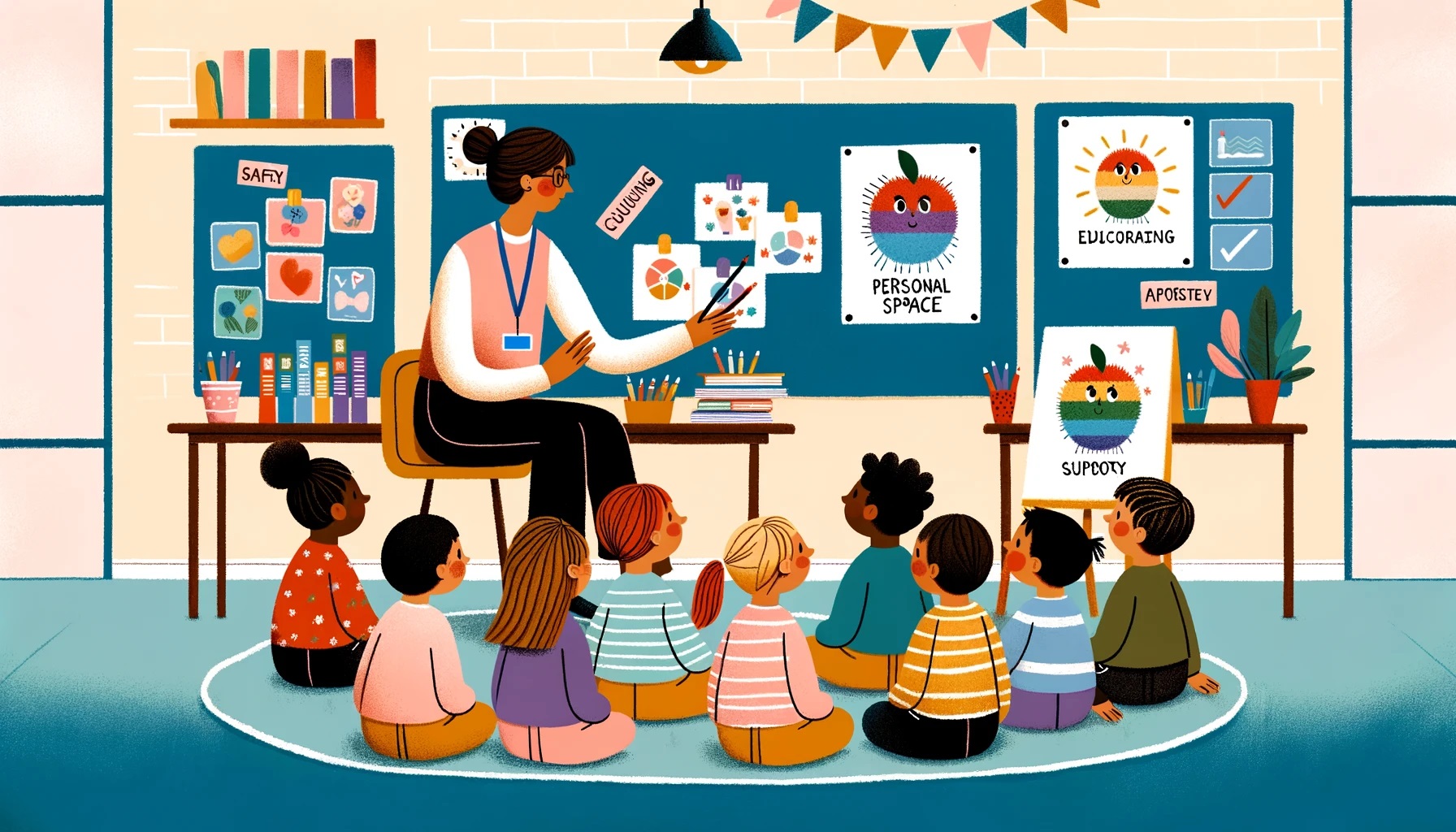
In the light of National Safety Day observed on the 4th of March each year, there’s a crucial aspect of safety that demands our attention—not just physical safety but the safety of our personal boundaries. This calls for an essential conversation about teaching children the concept of good touch and bad touch in schools, a topic that extends beyond the basics of traffic and environmental safety to the core of personal security and dignity.
Why, you might ask, is it vital to introduce this topic in the educational ecosystem? Simply put, knowledge is power. Educating children on the difference between a ‘good touch’ and a ‘bad touch’ empowers them to understand their rights, recognise inappropriate behaviour, and importantly, speak up. In an era where the safety of children should be paramount, this education acts as a shield, protecting their innocence and integrity.
But the conversation doesn’t stop with the children. It extends to the educators themselves. In the process of enlightening the young minds about safety, it’s equally critical for teachers to undergo training on the same subject. This dual approach serves a twofold purpose: a) it equips teachers to handle disclosures of inappropriate touch with sensitivity and the seriousness it demands, ensuring the right steps are taken to safeguard the child and b) it makes educators aware of their own actions, ensuring their interactions with students are always appropriate and beyond reproach.
The Protection of Children from Sexual Offences (POCSO) Act, implemented in India, underscores the importance of such education. The Act provides a legal framework to protect children against offences of sexual abuse, sexual harassment, and pornography while safeguarding the child at every stage of the judicial process. Incorporating awareness about the POCSO Act in school curriculums and teacher training programs reinforces the legal and moral responsibilities we hold towards our children.
Integrating this education into schools demands sensitivity, age-appropriate language, and a nurturing environment where children feel safe to express their concerns. It’s about building trust, ensuring every child knows they have a voice and that voice will be heard and respected.
For educators, this training should be an integral part of their professional development. Understanding the nuances of child psychology, the impact of their actions, and the legalities of child protection are essential components of their role. This knowledge not only protects the children but also the educators, fostering a safe and respectful learning environment.
Now, over to you, dear readers. Engaging in this dialogue is the first step towards change. Schools must be sanctuaries of learning, not just academically but socially and personally. As parents, educators, and members of the community, it’s our collective responsibility to advocate for and implement this crucial education. Share your thoughts, experiences, and suggestions. How can we, as a society, better protect our children? Your voice matters in shaping a safer future for our youngest citizens.
This conversation is not just necessary; it’s urgent. Let’s not shy away from it. Together, we can create a culture of safety, respect, and understanding, making every day a step towards a safer tomorrow for our children.
Education
Confronting the Crisis: Addressing Student Suicides in Kota and Beyond
Published
2 months agoon
March 1, 2024
In a deeply troubling trend that underscores a crisis in India’s educational system, recent statistics paint a harrowing picture of the mental health challenges faced by students across the country. With reported cases of suicide linked to academic pressure on the rise, the urgency to address this issue has never been more critical. In the early months of 2024 alone, there have been distressing reports from prestigious institutions like IIT Kanpur, IIT Delhi, IIT Roorkee, and IIT BHU, totaling 5 incidents of student suicides.
Kota, often dubbed as India’s coaching capital, has become synonymous with the immense pressure faced by students preparing for competitive exams. The town witnessed an all-time high of 26 student suicides last year, a stark indicator of the unbearable stress these young minds are subjected to. This year, six students in Kota have already succumbed to the pressure, including an 18-year-old JEE aspirant who deemed herself a “loser” for not being able to meet the expectations set by the highly competitive exam.
These incidents are not isolated to Kota or the IITs; they are symptomatic of a larger, systemic issue plaguing educational institutions across India. A 17-year-old intermediate student in Telangana’s Adilabad district, for example, took his own life after being denied entry to an exam for arriving late, a decision that pushed him towards a tragic end.
The narrative emerging from these incidents is clear: the educational system, coupled with societal expectations, is creating an environment where failure is not seen as a part of learning but as an insurmountable setback. This mindset is contributing to a dangerous escalation in the student suicide rate, particularly in coaching hubs like Kota, where the pressure to succeed in exams such as NEET, UPSC, and JEE is immense.
It is high time that schools, universities, and parents across India recognize the gravity of this issue. The relentless pursuit of academic excellence at the cost of students’ mental health is an unsustainable and harmful practice. Educators and caregivers must foster an environment where failure is acknowledged as a step towards growth and where students are encouraged to explore their passions without the fear of judgment.
Moreover, the implementation of comprehensive mental health programs and the promotion of open conversations about failure and resilience can significantly mitigate the risks associated with academic pressure. It is crucial for educational institutions to partner with mental health professionals to provide students with the support they need to navigate the challenges of their academic journeys.
So what is eventually required of the education sector? the alarming rate of student suicides in India is a call to action for all stakeholders in the educational sector. The tragic losses experienced in places like Kota serve as a stark reminder of the need to reevaluate our approach to education and student well-being. By cultivating an environment that values individuality, encourages exploration, and provides robust support systems, we can work towards a future where the pursuit of knowledge is not marred by the fear of failure but is celebrated as a path to personal and intellectual growth.
Education
World NGO Day: Including Social Service and Philanthropy in Curriculum
Published
2 months agoon
February 27, 2024
On World NGO Day, celebrated each 27th of February, we’re reminded of the pivotal role NGOs play in fostering social change and development. It’s an opportune moment to reflect on a critical gap in our education system—integrating social service into school curriculums. While Indian schools commendably cover moral science and discuss the multifaceted challenges of poverty, they often skirt around a crucial lesson: the importance of giving back to society, a principle that acknowledges our inherent privileges.
The privilege of accessing education and enjoying life’s luxuries is not a universal given; it’s a blessing. Recognizing this privilege entails acknowledging our responsibility to contribute positively to society, underscoring the necessity of philanthropy in our educational ethos. However, mere acknowledgment isn’t enough; action is imperative. This is where the collaboration with NGOs becomes invaluable.
Consider the transformative potential of inviting NGOs working in education into our schools. These organizations, such as Pratham, Akshaya Patra, and Teach For India, are not just entities; they are repositories of real-world experiences and agents of change. By partnering with these NGOs, schools can offer students more than theoretical knowledge; they can provide them with hands-on experiences in social service, embedding the value of giving back into the fabric of their education.
Imagine the impact of integrating assignments that require active participation in social causes—organizing donation drives, participating in animal welfare activities, or contributing to environmental conservation efforts. Such initiatives do more than inculcate a sense of responsibility; they foster empathy, cultivate a sense of community, and prepare students to be conscientious citizens.
The benefits of integrating social service into school curriculums extend beyond moral and ethical development. They equip students with critical life skills—teamwork, leadership, problem-solving, and empathy—preparing them for the challenges of the real world. Moreover, these engagements offer tangible experiences of impact, teaching students that their actions can indeed make a difference. For example, organising donation drives and animal welfare camps where students can be the volunteers for a better, bigger cause is a great way to include social services into our curriculum.
The partnership between schools and NGOs can take various forms, from guest lectures and workshops to long-term projects and internships. These collaborations provide a platform for NGOs to raise awareness about their causes and for students to engage with these issues deeply and meaningfully.
By making social service an integral part of the curriculum, we can ensure that education transcends academic achievements to include the development of well-rounded individuals who are aware of their social responsibilities. It’s about creating a culture of giving back, fostering a generation that is not only educated but also empathetic and engaged with the world’s pressing challenges.
So, let’s commit to enriching our educational systems with the values of social service and philanthropy. Let’s embrace the opportunity to partner with NGOs and transform our students into not just scholars but also compassionate contributors to society. In doing so, we pay forward our blessings and take meaningful steps towards building a more equitable and caring world.
Education
Education or Profit? Bombay High Court Calls for Accessible Learning for All
Published
2 months agoon
February 23, 2024
In a recent statement that hits home for many, the Bombay High Court pointed out a harsh truth: education, once considered sacred in our culture, has now become something many can hardly afford. The court stressed that it’s the government’s duty to make sure everyone in the country has access to good quality education, highlighting the importance of education in the growth and development of society.
Judges AS Chandurkar and Jitendra Jain shared their thoughts during a case involving a request to open a new college. They mentioned a concern that only letting groups with previous experience in education open new colleges could unfairly keep new players out of the game. This could lead to a few big names controlling the education sector, which isn’t fair to everyone else. Yet, they also acknowledged that experience is important to make sure these new institutions can actually provide good education. While acknowledging the importance of experience in managing educational institutions, the justices called for a more balanced approach. They suggested the establishment of clear, quantifiable parameters for evaluating applications for new colleges, thereby ensuring a fair and competitive educational landscape.
This judicial intervention is a stark reminder of the ongoing transformation of the education sector into an ‘education industry,’ where the pursuit of profit often overshadows the noble mission of disseminating knowledge.
With tuition fees skyrocketing and private coaching centers popping up everywhere, education is becoming more about money and less about learning and growth. It’s a wake-up call for those running educational institutions to remember the real reason they’re in this field – not to make a profit, but to educate and shape future generations.
This scenario demands a reevaluation of our priorities. Education should not be a luxury only a few can afford. It’s a fundamental right that paves the way for a better future for individuals and society as a whole. It’s time for educational institutions to reflect on their purpose and for the government to take action to ensure that quality education is accessible to everyone, regardless of their financial status. This entails not only regulating fees and ensuring transparency in the functioning of educational institutions but also investing in public education to enhance its quality and reach.
“Although ‘education’ is a pious in our culture but with change in time it has taken a different colour and has become unaffordable. It is the State’s Constitutional responsibility to ensure quality education reaches all the citizens of this country to achieve the growth and development of humanity”, the court said.
The Bombay High Court’s remarks are a crucial reminder for us all. It’s a call to action to prevent the commercialization of education from overshadowing its true value and to work towards a system where education is seen not as an industry, but as a vital service that nurtures humanity’s growth and development.
(With inputs from Livelaw.in)
Newsletter

Questioning the Trend of Lavish Farewells- #FarewellFiasco

Young Birders’ Workshop Opens Registration for Children Aged 10-13 Years

STEMpedia Successfully Completed Codeavour 5.0- India’s National Innovation Fest

Reviving School Education: Countering the Coaching Centre Dominance
CBSE to Initiate Pilot for National Credit System in Grades 6, 9, and 11

The Role of Marketing in Education: Navigating the New Educational Landscape

From Overwhelmed to Empowered: Strengthening Educator Skills for Success

NCERT Introduces Bridge Month Programme for Class 6 Amid Textbook Transition

Indian Embassy Advocates for India-US Collaboration in Education Sector

Nurturing Healthy Behaviors: The Role of Schools in Shaping Health-Conscious Citizens

CBSE Updates Exam Structure for 11th & 12th Class; Concept-based Questions Now 50% of Weightage

Sharing the spotlight: When parent and child take board exams together

Rebalancing the Scales: The Urgent Call for Humanities in STEM-Dominated Curricula

Palette of Possibilities: Nurturing Creativity in Schools through Modern Art

Empowering Minds: The Journey of My Guide Inside with Christa Campsall

The Potential of an Entrepreneurial Development Programme for Primary School Students

FPSB India and IIM Bangalore Forge Strategic Partnership to Advance Financial Education

1 in 6 School-Age Children Face Cyberbullying: Calls for Immediate Action

GD Goenka Group To Establish 12 New Schools from April 2024

World Theatre Day: Let Theatre Arts Make Classroom’s Showtime Spectacular!

Lessons Beyond a Cricket Pitch: An IPL-Inspired School Curriculum

Post-pandemic: Embracing Well-being in India’s Schools with My Guide Inside

The Intersection of Happiness and Technology in Education

India-Bhutan Strengthen Ties: Focus on STEM Education

Life of My Father: Dr. Jagdish Gandhi, a Pioneer in Education

Life of My Father: Dr. Jagdish Gandhi, a Pioneer in Education

Mayo College Announces New Leadership

Post-pandemic: Embracing Well-being in India’s Schools with My Guide Inside

Empowering the Future: The Success of Beti Bachao Beti Padhao in Girls’ Education

Is Students’ Data in Safe Hands in a Digital World?

Central Government Sets New Framework for Coaching Centres

FPSB India and IIM Bangalore Forge Strategic Partnership to Advance Financial Education

Radio Broadcasting in Schools: Creating a Platform for Student Voices

India to recognise Farsi as a classical language under New Education Policy

Farewell to a Pioneer: Dr. Jagdish Gandhi’s Enduring Legacy in Education

Kerala Introduces ‘Water-Bell’ Initiative in Schools to Boost Hydration

Anticipating a Progressive Leap: The Education Sector’s Hopes for Union Budget 2024

Lexicon Schools Spark Innovation with STEAM Fest

The Need to Preserve Newspapers for Bias-Free Education

A Voice for All Ages: The Enduring Legacy of Ameen Sayani in Indian Education

Target Publications hosts workshop for grade 10th and 12th students of Snehasadan Shelter Homes and Reap NGO

Seth M. R. Jaipuria School launches CBSE School in Bhiwadi, Rajasthan

From 2025-26, Indian Students to Get Two Opportunities to Sit for Board Exams

The Rising Leaders’ Summit 2024: A Timeless Learning for Future Educational Leaders

International Women’s Day 2024: Are We Not Special?

ISRO Launches Young Scientist Programme 2024 for Budding Space Enthusiasts

Teach for India Invites Applications for its 2024 Fellowship Program

Ministry of Women and Child Development Unveils National Curriculum Framework for Early Childhood Care and Education

World Theatre Day: Let Theatre Arts Make Classroom’s Showtime Spectacular!

TAISI Revives Annual Student Sports Event After 3-Year Hiatus
SGEF2023 | Special Address by Rama Datt, Trustee, Maharaja Sawai Man Singh II Trust, Jaipur

ScooNews | After Movie | ScooNews Global Educators Fest 2023

Aftermovie | NIES2 UP Chapter | 21 Jan 2023

WEBINAR | Gamification in Education: How Digital Badges Can Boost Student Motivation and Engagement

ScooNews | WEBINAR| Importance of Physical Activity for Children at School | Plaeto

SCOONEWS | WEBINAR | WHY DIGITIZING YOUR SCHOOL IS A MUST | TEACHMINT

Keynote Address | Lakshyaraj Singh Mewar

Anurag Tripathi, Secretary, CBSE at SGEF2022

How schools can nurture every student’s genius

Aftermovie | SGEF2022 | Jaipur

Li Andersson | Minister of Education | Finland

Anurag Tripathi, Secretary, Central Board of Secondary Education (CBSE) discusses NEP2020

ScooNews | Early Ed Asia 2019 | Aftermovie
#PodarECEconf : Pursuing quality ECE

#CBSE Class XII #Results #Highlights

The interesting story of India’s educational system | Adhitya Iyer

A young scientist’s quest for clean water

The Danger of Silence: Clint Smith

National Digital Library of India is an initiative by HRD Ministry

Remembering Kalpana Chawla on her birthday!

Message from Sadhguru for Students!
Message from Sadhguru for Students!

The Untapped Genius That Could Change Science for the Better

Eddy Zhong: How school makes kids less intelligent TEDxYouth@Beacon

#TEDxCanberra : What if every child had access to music education…
Trending
-
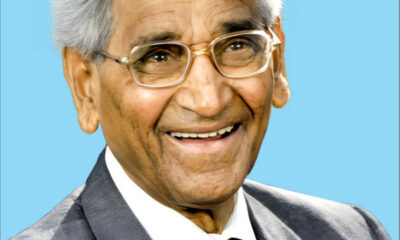
 Inspiration1 month ago
Inspiration1 month agoLife of My Father: Dr. Jagdish Gandhi, a Pioneer in Education
-
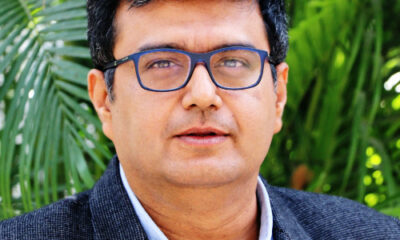
 Education3 months ago
Education3 months agoMayo College Announces New Leadership
-

 Education4 weeks ago
Education4 weeks agoPost-pandemic: Embracing Well-being in India’s Schools with My Guide Inside
-
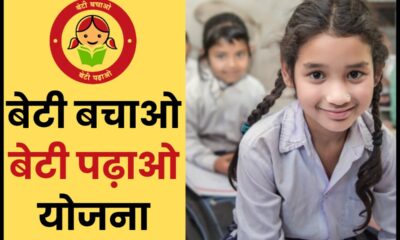
 Education3 months ago
Education3 months agoEmpowering the Future: The Success of Beti Bachao Beti Padhao in Girls’ Education
-

 Knowledge3 months ago
Knowledge3 months agoIs Students’ Data in Safe Hands in a Digital World?
-
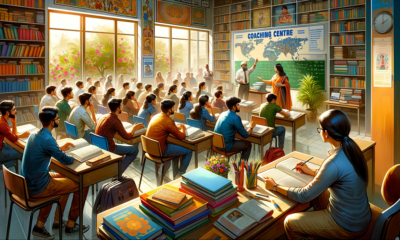
 Education3 months ago
Education3 months agoCentral Government Sets New Framework for Coaching Centres
-
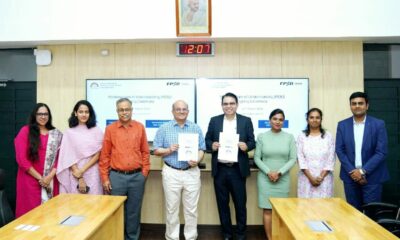
 Education3 weeks ago
Education3 weeks agoFPSB India and IIM Bangalore Forge Strategic Partnership to Advance Financial Education
-

 Education2 months ago
Education2 months agoRadio Broadcasting in Schools: Creating a Platform for Student Voices
-
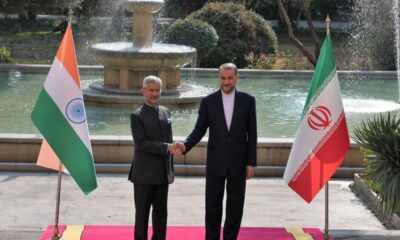
 Education3 months ago
Education3 months agoIndia to recognise Farsi as a classical language under New Education Policy
-
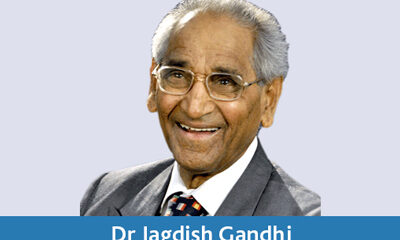
 Education3 months ago
Education3 months agoFarewell to a Pioneer: Dr. Jagdish Gandhi’s Enduring Legacy in Education



